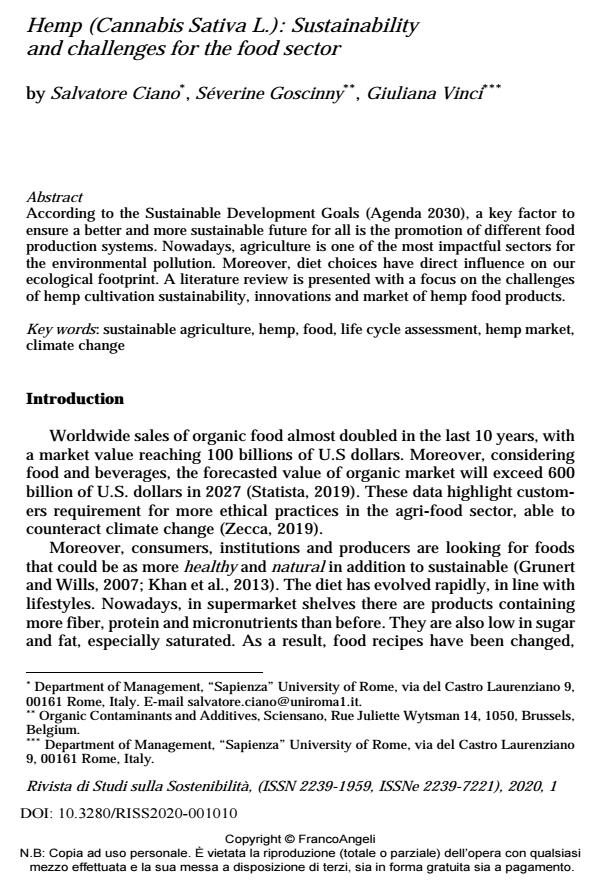Hemp (Cannabis Sativa L.): Sustainability and challenges for the food sector
Titolo Rivista RIVISTA DI STUDI SULLA SOSTENIBILITA'
Autori/Curatori Salvatore Ciano, Séverine Goscinny, Giuliana Vinci
Anno di pubblicazione 2020 Fascicolo 2020/1
Lingua Inglese Numero pagine 16 P. 179-194 Dimensione file 141 KB
DOI 10.3280/RISS2020-001010
Il DOI è il codice a barre della proprietà intellettuale: per saperne di più
clicca qui
Qui sotto puoi vedere in anteprima la prima pagina di questo articolo.
Se questo articolo ti interessa, lo puoi acquistare (e scaricare in formato pdf) seguendo le facili indicazioni per acquistare il download credit. Acquista Download Credits per scaricare questo Articolo in formato PDF

FrancoAngeli è membro della Publishers International Linking Association, Inc (PILA)associazione indipendente e non profit per facilitare (attraverso i servizi tecnologici implementati da CrossRef.org) l’accesso degli studiosi ai contenuti digitali nelle pubblicazioni professionali e scientifiche
According to the Sustainable Development Goals (Agenda 2030), a key factor to ensure a better and more sustainable future for all is the promotion of different food production systems. Nowadays, agriculture is one of the most impactful sec-tors for the environmental pollution. Moreover, diet choices have direct influence on our ecological footprint. A literature review is presented with a focus on the challenges of hemp cultivation sustainability, innovations and market of hemp food products.
Parole chiave:Sustainable agriculture, hemp, food, life cycle assessment, hemp market, climate change
- Organic hempseed oil from the retail market: chemical profiling and multivariate analysis for label information assessment Salvatore Ciano, Lucia Maddaloni, Mattia Rapa, Anna Maria Tarola, in British Food Journal /2023 pp.415
DOI: 10.1108/BFJ-08-2021-0924
Salvatore Ciano, Séverine Goscinny, Giuliana Vinci, Hemp (Cannabis Sativa L.): Sustainability and challenges for the food sector in "RIVISTA DI STUDI SULLA SOSTENIBILITA'" 1/2020, pp 179-194, DOI: 10.3280/RISS2020-001010